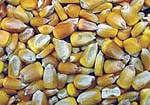Tip sheets highlight timely news and events at Washington University in St. Louis. For more information on any of the stories below or for assistance in arranging interviews, please see the contact information listed with each story.
The beat of a different drum
Symposium gathers computing greats to decide whether to go clockless

Computing royalty, including Ivan Sutherland, the father of computer graphics, and Wesley A. Clark, the designer of the world’s first personal computer, will gather at a computing symposium Friday, March 26th, 2004, from 1:00-5:30 p.m. at Washington University in St. Louis’s Whitaker Hall Auditorium. As part of the University’s 150th anniversary of its founding, participants will honor time by contemplating how computing can evade time as the industry prepares to go clockless.
Engineering combines with art in classy video
Award-winning video captures water, oil, mixing

What happens when water and oil mix? A tornado. An award-winning video from a mechanical engineer at Washington University in St. Louis shows how: http://mesun4.wustl.edu/ME/faculty/aqshen/news.html
Oxidizing hazardous particles
Device detects, traps and deactivates airborne viruses and bacteria using ‘smart’ catalysts

An environmental engineer at Washington University in St. Louis with his doctoral student has patented a device for trapping and deactivating microbial particles. The work is promising in the war on terrorism for deactivating airborne bioagents and bioweapons such as the smallpox virus, anthrax and ricin, and also in routine indoor air ventilation applications such as in buildings and aircraft cabins.
Cutting corn down to size
Maize genome pilot sequencing project results in six-fold reduction of effective size of maize genome

A team of scientists that includes a Washington University in St. Louis biologist, has evaluated and validated a gene-enrichment strategy for genome sequencing and has reported a major advance in sequencing large genomes. The team showed a six-fold reduction of the effective size of the Zea mays (maize or corn) genome while creating a four-fold increase in the gene identification rate when compared to standard whole-genome sequencing methods.